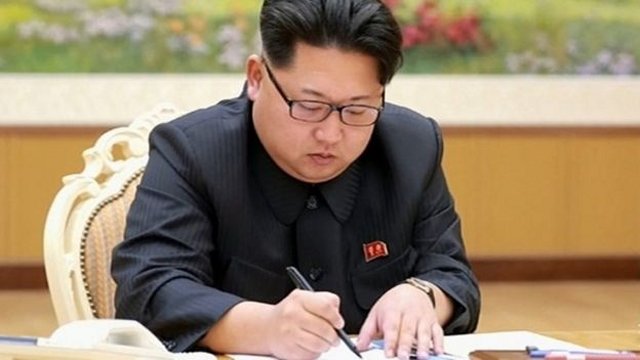Breaking news
North Korea conducted its first hydrogen bomb test 40601161.
| 2016
|
|
|||
|
Defence & Security News - North Korea
|
|||
|
|
|||
| North Korea conducted its first hydrogen bomb test | |||
|
North Korea's surprise hydrogen bomb test announcement came after a 5.1 magnitude quake detected close to its nuclear test site at Punggye-ri, indicating a test may have been conducted. This is North Korea's first claim to have tested a hydrogen nuclear bomb - more powerful than an atomic bomb.
|
|||
|
|
|||
 A picture from North Korean state TV showing leader Kim Jong-un signing the document for the hydrogen bomb test A picture from North Korean state TV showing leader Kim Jong-un signing the document for the hydrogen bomb test |
|||
|
|
|||
|
Suspicion of an underground test was first raised after the US Geological Survey said the epicentre of the quake - detected at 10:00 Pyongyang time (01:30 GMT) - was in the north-east of the country, some 50km (30 miles) from Kilju city, near Punggye-ri.
Then in a surprise announcement, a newsreader on North Korean state TV said: "The republic's first hydrogen bomb test has been successfully performed at 10:00 am on January 6, 2016." Last month, North Korean leader Kim Jong-un said Pyongyang had developed a hydrogen bomb, although many experts were sceptical. On top of any fourth previous nuclear test, North Korea also appears to have tested a submarine-launched missile. The ability to launch missiles from submarines would change the whole calculation of military response because warning times of an attack on, for example, the West Coast of the United States would be much shorter. A hydrogen bomb is A weapon where the nuclear fusion of hydrogen isotopes creates a rapid release of energy, developed in 1952 by the United States, also known as a thermonuclear bomb, it can be much more powerful than atomic weapons that use fission. Such bombs can be as small as a few feet long and can fit in warheads of ballistic missiles. |
|||


























